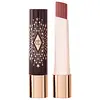What's inside
What's inside
 Key Ingredients
Key Ingredients

 Benefits
Benefits

 Concerns
Concerns

 Ingredients Side-by-side
Ingredients Side-by-side

Ethylhexyl Methoxycinnamate 7.49%
UV AbsorberBenzophenone-3 2%
UV AbsorberCera Alba
EmollientRicinus Communis Seed Oil
MaskingSimmondsia Chinensis Seed Oil
EmollientHydrogenated Olive Oil Decyl Esters
Emulsion StabilisingVitis Vinifera Seed Oil
EmollientParfum
MaskingCopernicia Cerifera Wax
Persea Gratissima Oil
Skin ConditioningLimnanthes Alba Seed Oil
Skin ConditioningRibes Nigrum Seed Oil
EmollientHelianthus Annuus Seed Oil
EmollientRosa Damascena Flower Water
MaskingRetinyl Palmitate
Skin ConditioningAscorbyl Palmitate
AntioxidantAscorbyl Tetraisopalmitate
AntioxidantTocopherol
AntioxidantSucrose Tetrastearate Triacetate
EmollientCI 15985
Cosmetic ColorantCI 77891
Cosmetic ColorantCI 15850
Cosmetic ColorantPolyglyceryl-3 Polyricinoleate
EmulsifyingCI 77491
Cosmetic ColorantCI 77499
Cosmetic ColorantPropyl Gallate
AntioxidantLimonene
PerfumingBenzyl Alcohol
PerfumingLinalool
PerfumingBHT
AntioxidantCitral
PerfumingCitronellol
PerfumingGeraniol
PerfumingCI 19140
Cosmetic ColorantCI 42090
Cosmetic ColorantCI 45410
Cosmetic ColorantCI 77492
Cosmetic ColorantEthylhexyl Methoxycinnamate 7.49%, Benzophenone-3 2%, Cera Alba, Ricinus Communis Seed Oil, Simmondsia Chinensis Seed Oil, Hydrogenated Olive Oil Decyl Esters, Vitis Vinifera Seed Oil, Parfum, Copernicia Cerifera Wax, Persea Gratissima Oil, Limnanthes Alba Seed Oil, Ribes Nigrum Seed Oil, Helianthus Annuus Seed Oil, Rosa Damascena Flower Water, Retinyl Palmitate, Ascorbyl Palmitate, Ascorbyl Tetraisopalmitate, Tocopherol, Sucrose Tetrastearate Triacetate, CI 15985, CI 77891, CI 15850, Polyglyceryl-3 Polyricinoleate, CI 77491, CI 77499, Propyl Gallate, Limonene, Benzyl Alcohol, Linalool, BHT, Citral, Citronellol, Geraniol, CI 19140, CI 42090, CI 45410, CI 77492
Diisostearyl Malate
EmollientBis-Behenyl/Isostearyl/Phytosteryl Dimer Dilinoleyl Dimer Dilinoleate
EmollientBis-Diglyceryl Polyacyladipate-2
EmollientHydrogenated Polyisobutene
EmollientCeresin
Emulsion StabilisingOctyldodecanol
EmollientSynthetic Wax
AbrasivePentaerythrityl Tetraisostearate
Emollient1,2-Hexanediol
Skin ConditioningDisteardimonium Hectorite
StabilisingSodium Hyaluronate
HumectantPassiflora Edulis Seed Oil
EmollientTheobroma Grandiflorum Seed Butter
Skin ConditioningPalmitoyl Hexapeptide-12
Skin ConditioningParfum
MaskingTocopheryl Acetate
AntioxidantPropylene Carbonate
SolventCaprylic/Capric Triglyceride
MaskingC10-18 Triglycerides
EmollientTriolein
Skin ConditioningStearalkonium Hectorite
Gel FormingGlyceryl Dioleate
EmollientCI 77891
Cosmetic ColorantIron Oxides
CI 15850
Cosmetic ColorantDiisostearyl Malate, Bis-Behenyl/Isostearyl/Phytosteryl Dimer Dilinoleyl Dimer Dilinoleate, Bis-Diglyceryl Polyacyladipate-2, Hydrogenated Polyisobutene, Ceresin, Octyldodecanol, Synthetic Wax, Pentaerythrityl Tetraisostearate, 1,2-Hexanediol, Disteardimonium Hectorite, Sodium Hyaluronate, Passiflora Edulis Seed Oil, Theobroma Grandiflorum Seed Butter, Palmitoyl Hexapeptide-12, Parfum, Tocopheryl Acetate, Propylene Carbonate, Caprylic/Capric Triglyceride, C10-18 Triglycerides, Triolein, Stearalkonium Hectorite, Glyceryl Dioleate, CI 77891, Iron Oxides, CI 15850
 Reviews
Reviews

Ingredients Explained
These ingredients are found in both products.
Ingredients higher up in an ingredient list are typically present in a larger amount.
Ci 15850 is the pigment color red. It is an azo dye and created synthetically.
Azo dyes need to be thoroughly purified before use. This allows them to be more stable and longer-lasting.
This ingredient is common in foundations, lipsticks, and blushes. This color is described as brown/orangey red.
It has many secondary names such as Red 6 and Red 7. According to a manufacturer, Red 6 usually contains aluminum.
Learn more about CI 15850Ci 77891 is a white pigment from Titanium dioxide. It is naturally found in minerals such as rutile and ilmenite.
It's main function is to add a white color to cosmetics. It can also be mixed with other colors to create different shades.
Ci 77891 is commonly found in sunscreens due to its ability to block UV rays.
Learn more about CI 77891Parfum is a catch-all term for an ingredient or more that is used to give a scent to products.
Also called "fragrance", this ingredient can be a blend of hundreds of chemicals or plant oils. This means every product with "fragrance" or "parfum" in the ingredients list is a different mixture.
For instance, Habanolide is a proprietary trade name for a specific aroma chemical. When used as a fragrance ingredient in cosmetics, most aroma chemicals fall under the broad labeling category of “FRAGRANCE” or “PARFUM” according to EU and US regulations.
The term 'parfum' or 'fragrance' is not regulated in many countries. In many cases, it is up to the brand to define this term.
For instance, many brands choose to label themselves as "fragrance-free" because they are not using synthetic fragrances. However, their products may still contain ingredients such as essential oils that are considered a fragrance by INCI standards.
One example is Calendula flower extract. Calendula is an essential oil that still imparts a scent or 'fragrance'.
Depending on the blend, the ingredients in the mixture can cause allergies and sensitivities on the skin. Some ingredients that are known EU allergens include linalool and citronellol.
Parfum can also be used to mask or cover an unpleasant scent.
The bottom line is: not all fragrances/parfum/ingredients are created equally. If you are worried about fragrances, we recommend taking a closer look at an ingredient. And of course, we always recommend speaking with a professional.
Learn more about Parfum